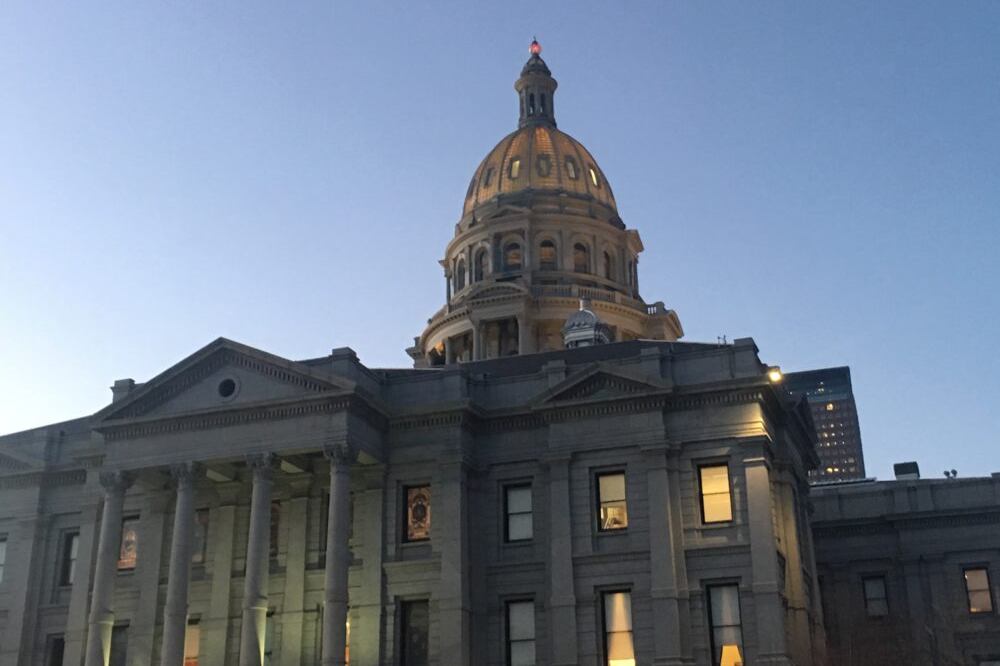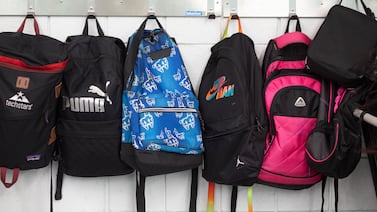The prospect of school budget cuts the likes of which have not been seen since the Great Recession is reigniting longstanding debates about the way Colorado funds K-12 education.
As of Wednesday evening, lawmakers on the Joint Budget Committee still had more than $1 billion to go toward filling a $3.3 billion hole caused by the economic impacts of the coronavirus. They’ve already made deep reductions to higher education, transportation, human services, and other departments and walked back a 2018 deal to shore up the state pension system in which most teachers participate.
They saved the cuts to K-12 for the very end of the budget process.
Colorado’s school finance formula directs more money to well-off school districts with high cost of living than to districts serving large numbers of children in poverty, and voter-approved local property taxes exacerbate inequities between districts.
Meanwhile, the legislature’s go-to mechanism for cutting school funding to balance the budget — an across-the-board cut to per-pupil funding — hits rural districts harder than others. Rural districts get more money per student to make up for their small size, but that means each percentage-point reduction costs them more money.
“Depending on the magnitude of necessary reductions, some school districts and charter schools may struggle to continue core operations” if changes aren’t made, analysts warned in a memo laying out options for lawmakers.
The crisis has some education advocates calling on lawmakers to make changes that had previously been politically unpalatable.
Proponents of change often hear “now is not the time,” said Leslie Colwell of the Colorado Children’s Campaign. “And we heard that when times were good. When is the time then? This feels like it has to be the time.”
In a letter sent Wednesday and signed by nearly three dozen school districts and community groups, the Colorado Children’s Campaign called on lawmakers to not reward districts that have high costs of living or that draw extra revenue from local taxes. Both ideas have been discussed on special committees in recent years, but in the face of political opposition, legislation has not moved forward.
The cost-of-living factor is worth almost 20% of the $4.4 billion the state spends on base funding and accounts for three times the amount spent on students in poverty. Local property tax overrides, meanwhile, add up to $1.4 billion statewide. These tax increases, approved by voters, were always intended to supplement state funding, not replace it.
The letter acknowledges this but argues that “extraordinary times” call for a new approach, even if it’s temporary.
“We believe the legislature should play a role in supporting communities that struggle to find adequate funding to meet student needs because of low property wealth and/or inability to raise local funds through mill levy overrides,” the letter says.
Notably absent from the signatures: groups like the Colorado Association of School Boards and the Colorado Rural Alliance that represent school district interests.
Michelle Murphy of the Rural Alliance said the proposed solutions create winners and losers even among rural districts. There isn’t time in an abbreviated legislative session focused on emergency measures to fully understand the impact, she said. The Rural Alliance is instead calling for dedicated funding for rural schools to offset across-the-board cuts.
Similarly, Matt Cook of the Colorado Association of School Boards said his members would be “a little concerned about trying to manipulate the factors.” Even in the best of times, no school district thinks it has enough money.
“Right now, we would encourage them as much as they can to continue to fund the total program,” he said.
The letter also called on the legislature to impose an emergency tax, which would require a two-thirds majority, an idea that the school board association and many other groups support.
It’s not clear just how deep the cuts to K-12 education will go. Colorado’s constitution requires that school funding go up by a rate equal to population plus inflation each year, but to meet other budget needs, lawmakers hold back some school money every year. This amount, known as the budget stabilization factor, has totaled more than $8 billion over the last decade; this year it was $572 million.
Legislative analyst Craig Harper told lawmakers they could hold back as much as $1.17 billion for 2020-21 without violating requirements to maintain school funding as a condition of receiving federal aid.
“My heart skips a beat when I see a $1.17 billion budget stabilization factor,” said state Rep. Julie McCluskie, a Dillon Democrat and member of the budget committee. “I can’t imagine increasing it that much.”
Committee members have already clawed back money from dozens of grant programs, including $60 million from a fund intended to support construction projects in cash-strapped districts. But it’s not enough yet. Education takes up 36% of Colorado’s general fund, and economic forecasts predict the general fund will be 25% smaller next year than this year.
Complicating the discussion is $510 million in federal coronavirus relief money that Gov. Jared Polis gave to K-12 schools in an executive order on Monday. That money can’t be used to balance the budget and comes with restrictions that it must be used by the end of the calendar year for needs associated with the pandemic. But many school districts fear it will leave lawmakers with a cleaner conscious about deeper cuts. However, the federal money is one-time funds, and districts worry state funding won’t recover for years to come.
Harper laid out a number of what he called “break the glass” options to reduce overall school funding without making across-the-board cuts. Those include:
- Reducing funding for full-day kindergarten, which was approved just last year, for preschool, or for high school students staying for a fifth year and taking college courses. Kindergarten alone is expected to cost $220 million next year, while maintaining existing preschool spots would cost another $124 million.
- Changing factors in the school finance formula. The cost-of-living factor accounts for more than $850 million a year, while students living in poverty account for just $254 million. Reducing the cost-of-living factor just 5% would save the state $68.7 million.
- Accounting for local property tax increases in deciding district funding. Once per-pupil funding is set at a certain point, the state backfills whatever amount isn’t generated by districts’ base property taxes. But due to the complicated intersection of constitutional provisions, districts have wildly different base tax rates. Some wealthy districts have low base property taxes, get generous state subsidies, and then collect additional taxes on top of that, while some less wealthy districts have high property tax rates, get low state subsidies, and cannot persuade voters to approve additional taxes.
Reflecting how controversial these ideas are, Harper suggested lawmakers “silence their cellphones” before he presented them this week. Nonetheless, he said he felt an obligation to provide options that would steer cuts away from the neediest students. A legislative analysis found that districts that benefit from the cost-of-living factor often are the same districts that have tax overrides. That means they have local revenue to offset cuts from the state.
Joint Budget Committee members must set the size of the cut to education this week. The rest of the General Assembly will take up the budget next week. That’s also where these ideas will need to gain traction if they’re going to pass.
State Sen. Paul Lundeen, a Monument Republican and longtime advocate for school finance changes, said he’s hopeful there’s an opening for a new conversation.
“We got to a point where we said we needed a paradigm shift,” he said of the previous efforts. “The absence of money has shifted the paradigm.”








